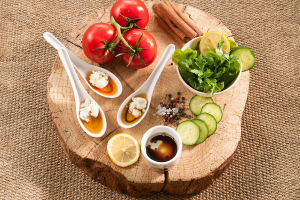Macarons are exquisite French desserts known for their vibrant colors and delicate shape.
Made with egg whites, powdered sugar, almond powder, and other ingredients, macarons have a smooth exterior and a soft interior, often filled with creamy fillings.
Renowned for their unique appearance and delicious taste, macarons have become iconic representatives of French pastry culture. Whether served as a dessert, offered as a gift, or enjoyed as a special treat during celebrations, macarons hold a special place in people's hearts.
The dizzying array of colors and flavors that macarons come in provide a delightful and visually pleasing experience. Whether you savor their flavors or simply appreciate their beauty, macarons are an irresistible delicacy.
The history of macarons can be traced back to the Middle Ages, but their exact origin and development remain somewhat controversial.
One theory suggests that macarons originated in Italy and were introduced to France through Queen Marie Antoinette at the Palace of Versailles.
According to this account, macarons were initially made with two almond biscuits, similar to the macaroons that are commonly known today. However, the precise origin and evolution of this version of macarons in France remain unclear.
Another theory suggests that macarons originated in France, particularly at the Palace of Versailles. In the 18th century, French pastry chefs began sandwiching two biscuits with jam or cream fillings, shaping them into macarons.
Over time, macarons gradually evolved into the smooth-skinned and richly flavored desserts that they are today, becoming important representatives of French pastry culture.
Regardless of their exact origins, macarons gained popularity throughout France, particularly in the 19th century. The Paris region, in particular, became renowned for producing exquisite macarons, and the variety of unique flavors and colors made them one of the most sought-after pastries.
In recent years, macarons have gained global popularity and have become favorites among bakers and dessert enthusiasts worldwide. The process of making macarons is relatively complex and requires precise recipes and skills.
Due to their stunning appearance and delightful taste, macarons have become popular subjects on various social media platforms, attracting significant attention and sparking lively discussions.
Here are the general steps for making macarons:
Ingredients:
110g almond flour
200g powdered sugar
100g egg whites
30g granulated sugar
Food coloring (optional)
Fillings (Nutella, jam, cream, etc.)
Instructions:
Sift almond flour and powdered sugar together, then mix well. Add food coloring if desired.
In a clean bowl, beat the egg whites using a mixer or whisk until foamy. Gradually add the granulated sugar while continuing to beat until the egg whites become smooth, and creamy, and form stiff peaks.
Add the almond flour and powdered sugar mixture to the whipped egg whites in two additions. Gently fold the mixture together using a spatula until well combined and glossy. Avoid overmixing to prevent deflating the egg whites.
Prepare a piping bag and attach a round tip to the bottom. Pipe the batter into small round biscuits, about 2-3 cm in diameter, onto a baking sheet lined with parchment paper.
Tap the baking sheet lightly once or twice to remove any air bubbles. Allow the macarons to rest at room temperature for 30 minutes to 1 hour, forming a thin film that helps create a smooth crust during baking.
Preheat the oven to 160°C. Once the macarons have developed a film, place the baking sheet in the oven and bake for approximately 12-15 minutes, or until the macarons are firm on the bottom but still slightly soft on top.
Remove the baking sheet from the oven and let the macarons cool completely on the sheet.
Once the macarons have cooled, pair them up according to size and shape. Fill one macaron biscuit with the desired filling, such as chocolate sauce, jam, or cream. Gently press another biscuit on top to create a sandwich.
If possible, refrigerate the macarons for a few hours or overnight to enhance their flavors.
Making macarons requires patience and skill, especially in achieving the right consistency for the batter and determining the optimal baking time. Through practice and experimentation, you can gradually master the art of making macarons and enjoy the satisfaction of creating your own delicious pastries.


